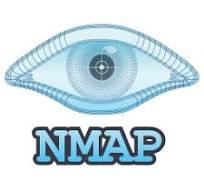Introduction to Network Penetration Testing Tools
Network penetration testing tools are the cornerstone of modern cybersecurity practices, they help organizations identify and address vulnerabilities before malicious actors can exploit them. By simulating real-world attacks, these tools empower security professionals to proactively safeguard sensitive data, maintain regulatory compliance, and bolster overall cyber resilience.
In this blog, we take a look at the different categories to which these tools are used, and highlight some of the most effective and widely used network penetration testing tools in 2024.
Categories of Network Penetration Testing Tools
Various tools are designed to tackle specific aspects of security assessment. Broadly speaking, these tools can be categorized as follows:
Port Scanners: Port scanners like Nmap are indispensable for discovering open ports and services on a network. These tools provide a detailed view of the network’s attack surface, allowing testers to identify entry points that might be exploited.
Vulnerability Scanners: Tools such as Nessus specialize in pinpointing potential vulnerabilities in systems, applications, and devices. They provide comprehensive reports, enabling organizations to prioritize and remediate weaknesses effectively.
Network Sniffers: Network sniffers, including Wireshark, capture and analyze network traffic. These tools are essential for diagnosing issues, detecting anomalies, and uncovering malicious activities within a network.
Exploitation Frameworks: Exploitation frameworks like Metasploit provide a platform for developing and executing exploit code. They enable testers to validate vulnerabilities and demonstrate the potential impact of an attack.
Now that we understand the different categories of tools used in network penetration testing, let’s dive in to some of the best pen testing tools in use in 2024. We look into 10 best network penetration testing tools, highlighting their strengths and weaknesses.
Top Network Penetration Testing Tools in 2024
There are so many tools available and choosing the right can might be difficult. Here, we introduce some of the most effective and widely used network penetration testing tools in 2024, along with their pros and cons:
Nmap:
Nmap (Network Mapper) is a powerful open-source tool used for network discovery and security auditing. It is known for its flexibility and wide range of scanning techniques.

Pros:
Highly versatile with support for a wide range of scanning techniques.
Provides detailed information about hosts, services, and operating systems.
Open-source and widely supported by the cybersecurity community.
Cons:
Can produce overwhelming data for beginners.
Ineffective against highly secured or stealthed systems.
-
Wireshark:
Wireshark is a popular network protocol analyzer that captures and inspects data packets in real-time, making it invaluable for network diagnostics and security analysis.

Pros:
Excellent for real-time packet analysis and deep inspection of network traffic.
Open-source with extensive documentation and community support.
Effective for identifying anomalies and diagnosing network issues.
Cons:
Requires significant expertise to interpret complex data.
Limited capability for offensive security tasks.
Metasploit Framework:
Metasploit is a comprehensive framework for penetration testing, offering tools for discovering, exploiting, and validating vulnerabilities.

- Pros:
Extensive library of exploits and payloads for testing vulnerabilities.
Streamlines the process of simulating real-world attacks.
Widely used and supported in the security community.
Cons:
High learning curve for beginners.
Potential for misuse if not handled responsibly.
Kali Linux:
Kali Linux is a Linux distribution tailored for penetration testing and ethical hacking, featuring a wide array of pre-installed security tools.

Pros:
Comprehensive suite of tools for scanning, exploitation, and forensic analysis.
Regular updates and community-driven development.
Portable and highly customizable.
Cons:
Resource-intensive, requiring robust hardware.
Overwhelming for users unfamiliar with Linux-based environments.
-
Burp Suite:
Burp Suite is a leading tool for web application security testing, providing functionalities for intercepting, modifying, and analyzing HTTP/S requests.

Pros:
Highly effective for analyzing HTTP/S traffic and identifying vulnerabilities.
Advanced features like scanner and repeater for detailed testing.
Customizable with plugins and extensions.
Cons:
Premium version required for full functionality.
Primarily focused on web application security, limiting broader network use.
-
John the Ripper:
John the Ripper is a fast password cracker, widely used to test the strength of passwords and uncover weak configurations.

- Pros:
- Fast and efficient password-cracking capabilities.
- Multi-platform support and open-source.
- Frequently updated with new features and algorithms.
- Cons:
- Limited to password-related tasks.
- Requires significant processing power for large datasets.
-
Nikto
Nikto is an open-source web server scanner designed to identify potential vulnerabilities and misconfigurations in web servers. It performs extensive tests against web servers, including checks for outdated software, default files, and known exploits.

Pros
- Lightweight and beginner-friendly.
- Free and open source.
- Quick scans for server vulnerabilities and misconfigurations.
- Customizable test cases and plugins.
Cons
- Limited to basic server-level checks.
- High rate of false positives requiring manual validation.
- No graphical interface (CLI-only).
- Infrequent updates and limited coverage of newer vulnerabilities.
-
SQLmap:
SQLmap is an automated tool for detecting and exploiting SQL injection vulnerabilities in web applications.

- Pros:
- Automates detection and exploitation of SQL injection vulnerabilities.
- Highly efficient with a wide range of database support.
- Open-source and regularly updated.
- Cons:
- Focused solely on SQL injection testing.
- Requires contextual knowledge for effective use.
-
OWASP ZAP:
OWASP ZAP (Zed Attack Proxy) is a user-friendly tool for web application security testing, particularly effective for beginners.

Pros:
Easy to use and ideal for beginners.
Open-source with extensive community contributions.
Comprehensive for web application testing.
Cons:
Limited scalability for larger or complex networks.
Primarily focused on web application vulnerabilities.
-
Nessus:
Nessus is a vulnerability assessment tool designed to identify and prioritize vulnerabilities across networks, systems, and applications.

Pros:
Comprehensive vulnerability scanning with detailed reports.
Covers a wide range of threats, including misconfigurations and missing patches.
Intuitive interface and easy setup.
Cons:
Premium pricing model can be a barrier for small organizations.
Limited offensive capabilities compared to exploitation tools.
Selecting the right tool for network penetration testing depends on your specific needs, expertise, and budget. Tools like Burp Suite and Nikto excel in their respective areas, with Burp Suite offering in-depth application-level testing and Nikto providing efficient server-level assessments. Similarly, each tool in your arsenal brings unique strengths—some focus on automation and scalability, while others excel in manual testing and customization.
For comprehensive testing, a combination of tools often yields the best results, ensuring both broad coverage and deep analysis. By understanding the strengths and limitations of each tool, penetration testers can create an effective and efficient workflow tailored to their objectives, maximizing the security insights they can deliver.
At SecureMyOrg, we uncover and fix all possible security vulnerabilities of mobile and web, while providing solutions to mitigate risks. We are trusted by renowned companies like Yahoo, Gojek and Rippling, and with 100% client satisfaction, you’re in safe hands!







Some of the things people reach out to us for –
- Building their cybersecurity program from scratch – setting up cloud security using cost-effective tools, SIEM for alert monitoring, building policies for the company
- Vulnerability Assessment and Penetration Testing ( VAPT ) – We have certified professionals, with certifications like OSCP, CREST – CPSA & CRT, CKA and CKS
- DevSecOps consulting
- Red Teaming activity
- Regular security audits, before product release
- Full time security engineers.
Conclusion: Leveraging the Right Tools for Optimal Security
Network penetration testing tools are the backbone of effective cybersecurity strategies. They offer insights into vulnerabilities, enabling organizations to proactively address risks and stay ahead of evolving threats. By understanding the categories and capabilities of these tools, businesses can craft a robust security framework tailored to their unique needs. In an era where cyber threats are increasingly sophisticated, investing in the right tools is not just a technical necessity but a strategic imperative. Whether you’re a seasoned security professional or a business owner seeking to enhance your defenses, these tools are indispensable allies in the fight against cybercrime.
Relevant Posts

What Is Penetration Testing as a Service?
Penetration testing as a service (PTaaS) lets experts simulate real attacks to uncover vulnerabilities before hackers do. This guide explains the process, benefits, and costs, helping businesses strengthen defenses with predictable, ongoing security checks.

How To Inspect Encrypted Traffic Without Breaking Privacy
Network administrators face a challenge: securing systems while respecting privacy. This guide explains how to inspect encrypted traffic without breaking privacy using metadata, anomaly detection, and machine learning ensuring visibility, compliance, and trust.

How to Audit Infrastructure as Code (IaC) for Security Vulnerabilities
Discover how to audit Infrastructure as Code (IaC) for security vulnerabilities with this practical guide. Learn to scan IaC files using tools like Checkov, fix issues like exposed resources, and integrate audits into CI/CD pipelines. Protect your cloud systems from misconfigurations and ensure compliance with clear, actionable steps.

DevSecOps Best Practices: Integrating Security Early in Your CI/CD Pipeline
This article provides a practical guide to embedding security into every stage of your CI/CD pipeline. Learn core DevSecOps best practices like SAST, DAST, dependency scanning, secrets management, and compliance automation to catch vulnerabilities early, foster a culture of shared ownership, and build a secure-by-design development process that accelerates release cycles.

5 Cloud Misconfigurations That Lead to Data Breaches
Cloud misconfigurations are one of the leading causes of data breaches, yet they’re also among the most preventable. From exposed storage buckets to weak IAM policies, attackers exploit these mistakes daily. Learn about the top 5 misconfigurations and how your organization can fix them before they lead to costly data exposure.

How Can Ethical Hacking Training Elevate Your Internal Cybersecurity?
Ethical hacking training empowers organizations to strengthen internal cybersecurity by uncovering vulnerabilities before attackers do. From mastering penetration testing to enhancing incident response, this training builds a proactive security culture. Learn how Secure My ORG’s programs can elevate your team’s skills and fortify defenses against modern threats like AI-driven attacks.
